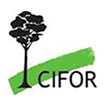
People have hunted animals in Africa’s tropical forests for millennia, bringing a diverse range of animal meat—from aardvark to porcupine to antelope—home to eat or sell.
The practice can pose threats to species survival but is also critical to the culture, livelihoods and diets of millions of people in what is one of the world’s poorest and most food- and nutrition-secure regions. As such—and as in other parts of the globe where wild meat is a key protein source for rural populations—“it is essential that hunting is carried out sustainably, or both the wildlife and the people can suffer irreparable harm,” said Fiona Maisels, a scientist at the Wildlife Conservation Society (WCS).
As hunting methods improve, urban demand for wild meat increases and human populations in the region continue to grow (the human population of sub-Saharan Africa is predicted to double between 2019 and 2050), sustainable management of these species will continue to be critical. Yet until recently, policymakers and communities have not had a coherent regional picture of wild animal hunting on which to base such management.
A new paper in Nature Sustainability, on which Maisels is a co-author, aims to change that, using new resources and techniques to map out the spatial and temporal patterns of wild meat extraction in West and Central Africa. Employing the WILDMEAT Database—the largest compilation of African hunting data to date—for their cause, the researchers synthesised evidence across 115 settlements in the region from 83 studies published between 1991 and 2020.
“The study highlights concerning trends towards increased commercial hunting and associated depletion of large-bodied wildlife,” summarized Lauren Coad, a scientist at the Center for International Forestry Research and World Agroforestry (CIFOR-ICRAF) and a co-author of the study.
More specifically, the synthesis revealed a marked shift from subsistence to commercial hunting across the analysis’ timescale. The mean proportion of wild meat that was sold increased considerably over time within the studies, from 34% in 1991 to 72% in 2020, and this shift was also associated with a higher amount of wild meat being taken out of the landscape per hunter per day.
The researchers also found that people hunting in easily accessible areas are increasingly coming home with smaller animals than their counterparts in more isolated and intact forests, suggesting a possible decline in larger wildlife due to overhunting.
Lead author and Durrell Institute of Conservation and Ecology (DICE) Research Fellow at the University of Kent, Daniel Ingram, cited the importance of developing robust monitoring and management frameworks for hunters and traders going forward. “Without monitoring hunted species populations and the numbers of animals hunted, the sustainability of hunting systems remains unknown.”
Katharine Abernethy, a professor in the Faculty of Natural Sciences at the University of Stirling, echoed that call for more widespread, detailed and accurate information. “We desperately need to give policymakers better information on what is happening to the wildlife resource, why, and how to manage it better,” she said.
The co-authors also noted that reducing urban demand for wild meat, including through increased regulation, will be critical to managing hunting pressure on forests. Yet, doing so abruptly could reduce hunting incomes for rural hunters and their families; viable and sustainable alternative livelihood options are required.
“Sustainable management of wildlife is still a challenging subject for the governments in Central Africa, as is finding alternatives to rural livelihoods involving bushmeat,” said co-author Donald Midoko Iponga, who directs the Institute for Research in Tropical Ecology at the National Center for Scientific and Technological Research in Gabon (IRET-CENAREST). “This research may help [those] governments to overcome some of these challenges.”
Acknowledgements
The study authors would like to acknowledge all funders, especially the United States Fish and Wildlife Service (USFWS), the United States Agency for International Development (USAID), UK Research and Innovation (UKRI Future Leaders Fellowship awarded to DJI), and the UKRI Global Challenges Research Fund (TRADE Hub Project).
We want you to share Forests News content, which is licensed under Creative Commons Attribution-NonCommercial-ShareAlike 4.0 International (CC BY-NC-SA 4.0). This means you are free to redistribute our material for non-commercial purposes. All we ask is that you give Forests News appropriate credit and link to the original Forests News content, indicate if changes were made, and distribute your contributions under the same Creative Commons license. You must notify Forests News if you repost, reprint or reuse our materials by contacting forestsnews@cifor-icraf.org.
Further reading
Wildmeat consumption needs new approach from forest to fork, experts say
Rural Nigerian communities caught more but sold less wild meat during the pandemic
Measuring wildlife degradation, made simple
Can wild meat be hunted sustainably in tropical forests?
Q&A: Researcher Julia Fa on reconciling wildlife and wild meat












